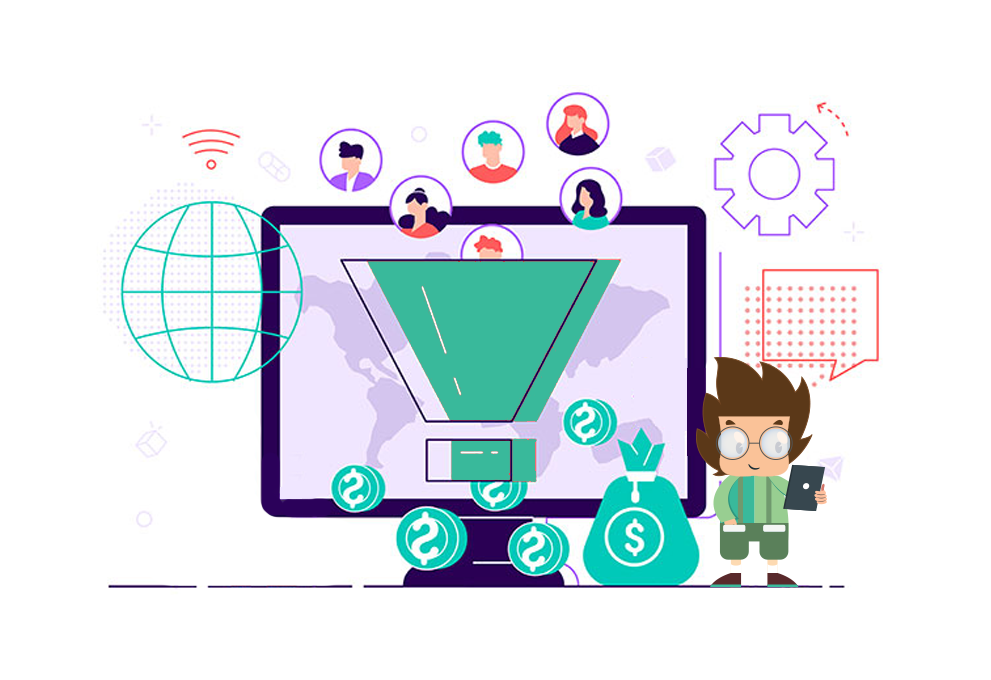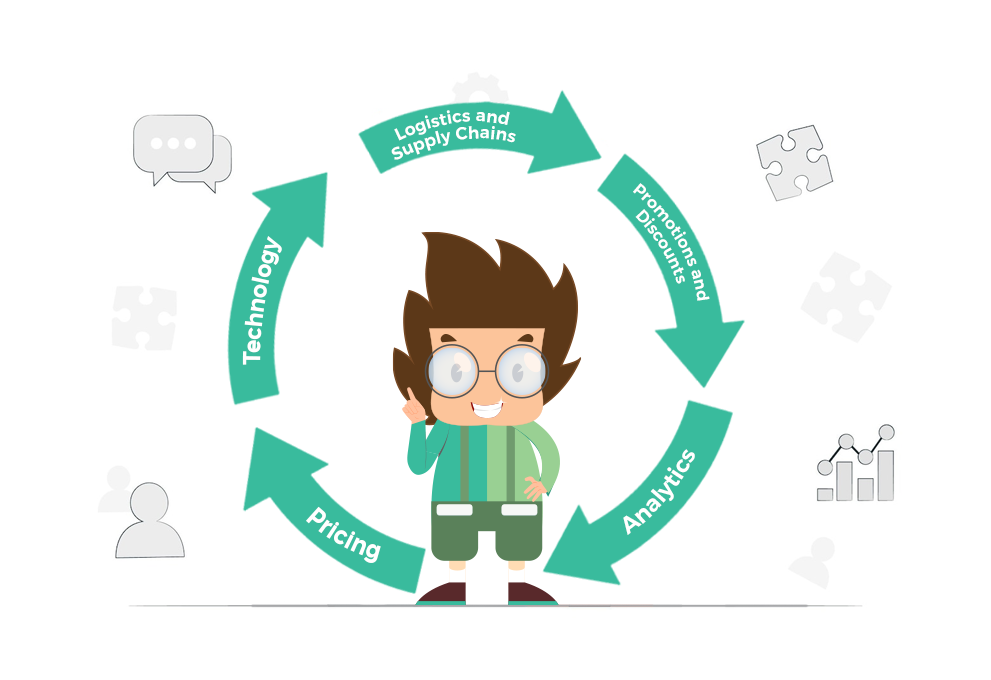How to Build an Effective Multi-Channel Retailing Strategy
Companies must take advantage of every opportunity to compete in today’s intensely competitive markets. This is especially true with MultiChannel eCommerce Business retailing tactics, which are here to stay. Top brands now need to consider a wide range of channels when developing their retail strategies to ensure that their product operates flawlessly on each one.
A multi-channel retailing strategy is priceless for any multi-channel eCommerce Business trying to build on prior triumphs, explore new markets, or draw in a new demographic of customers. Continue reading to find out more about how it functions and why your brand requires one.
What is a MultiChannel eCommerce Business Marketing Strategy in Retailing?
The distinctions between various channels are blurred by a multi-channel retailing strategy, which gives firms a clear idea of how their products should be offered through various locations.
Such tactics typically include internet platforms including applications, marketplace websites, and E-commerce websites. Additionally, they will consider offline channels including shops, marketplaces, and events.
Given the rapid advancement of E-commerce technology, multi-channel retailing options are always emerging for firms to consider. This is especially true of social networking platforms that are now focusing on online commerce, as many applications and websites now allow users to buy things without ever leaving the site.
Why Is Multi-Channel Retailing Important?
For today’s brands, MultiChannel eCommerce Business is essential. Once you start thinking about how buyers behave in today’s marketplaces, it’s simple to understand why.
If you thoroughly examine your consumers’ journeys, you’ll probably discover that they engaged with your brand several times before making a purchase. These encounters will frequently have taken place through a variety of channels, including social media, your own E-Commerce store, a brick-and-mortar location, or even a third-party online marketplace.
What Makes a MultiChannel eCommerce Business Effective?
The best multi-channel retailing strategies include a wide range of variables and combine them to produce a customer-focused interaction that consistently leaves a positive impression. Examine some of the key components of the best methods for creating enticing multi-channel offerings.
1- Pricing
In a multi-channel environment, pricing difficulties affect many brands. Customers frequently see a price on one channel, then when they return to make a purchase, discover that the price has changed.
This may cause a customer to abandon their purchase and harm the buyer’s trust. We advise using specialized software created to handle prices across numerous channels in order to prevent this issue.
2- Technology
Even if online shopping has been increasingly popular in recent years, most of us still prefer to purchase goods that we have physically seen in a store, no matter how fantastic eCommerce becomes. A multi-channel strategy shouldn’t be doomed, though, as businesses can now leverage technology that’s been created particularly to make in-store transactions and virtual showroom experiences easier.
3- Logistics and Supply Chains
Limitations in the supply chain are frequently the only thing keeping a business from expanding while business is booming. However, the best multi-channel methods can be created so that these issues are prevented. It all comes down to smart data management and a well-thought-out, centrally-managed system.
4- Promotions and Discounts
Consider your multi-channel approach while creating your next multichannel marketing campaign or discounting plan. We see corporations focusing all of their advertising expenditure on one network far too frequently when other channels can really provide a higher return on investment.
5- Analytics
The best multi-channel retailing strategies are all driven by data. Without data, businesses would be unable to fully comprehend how their consumers had been interacting with their various channels or determine which adjustments would actually improve customer journeys.
Make careful to approach data analysis from a MultiChannel eCommerce Business perspective. Create data management software that is channel-agnostic and enables teams to jointly examine the performance of all pertinent channels.
5 Pointers for Creating a Successful MultiChannel eCommerce Business
E-Commerce sales exceeded $400 billion in 2017, and through 2020, it is anticipated that these figures would increase by 9% annually. Amazon is responsible for approximately 43.5% of that, with eBay coming in second at 6%. Let’s take a look at the top 5 Tips to Build an Effective Multichannel E-Commerce Business.
– Channels Should Be Chosen Based on Profitability
Choosing the channels, you want to add is the first step in transforming your single-channel business into a multichannel one, whether you’re an online retailer or an online store. To do that, you’ll need to determine which channel is suitable for your ideal target market, the market you’re selling to, logistics for the fulfillment, and finally the price of selling on these platforms.
– Inventory Management
The first and most important step for creating a successful multiChannel eCommerce business is to ensure good, coordinated inventory management. Adding channels can make inventory management challenging since you have to make sure that you update product availability and prices across all selling platforms whenever you do so.
As an example. Make sure your website stock is changed to 6 black sweaters on all platforms if you have ten black sweaters in stock and sell one on Amazon and three on eBay. This will stop you from selling more stock than you actually have.
– Modify Your Strategies to Fit the Channel
You should start by picking the channels that are most appropriate for your potential customers, as I just explained. It’s also crucial to modify your approach and user experience to cater to customers on that platform.
When marketing to that channel, you will have a far better chance of making the sale if you adjust your strategy to meet buyers on each platform.
– Killer Should Not Be Exchanged for Channels
Bad customer service is the number one factor that damages a brand or a vendor. Maintaining your support and service is crucial when expanding your business across channels. This may be time-consuming, but it’s crucial to avoid damaging the company’s reputation or being banned from a marketplace due to subpar customer support.
– Keep your Eyes Close on Analytics
You must carefully study each channel’s analytics to make sure you understand where sales are coming from (or aren’t coming from) and make the required optimization adjustments if you want to build a successful multichannel business. Using multichannel analytics, you can learn:
- Who is purchasing what on each channel and where?
- amount of money spent
- Which items are still in the cart but not checked out?
- Which products on which channels are generating the highest returns for you?
What Does “Sales Channel” Mean?
We’ll examine each sort of sales channel in-depth and discuss how to position your company for long-term resilience
A sales Channel is the route a company takes to connect with its final clients so that it can either directly or indirectly sell them goods or services. Traditional Markets, e-commerce, wholesales, M-commerce, and more are a few examples of sales channels.
The Top 6 Most Important Sales Channels
- E-commerce
- Traditional Marketplaces
- Modern Marketplaces
- Retail
- Wholesale
- M-Commerce
Traditional and contemporary markets, retail and wholesale, and your own internet store are among the various sales channels. When deciding which channels are best for your business, you should weigh the advantages and disadvantages of each one.
E-Commerce
Ecommerce, for instance, is when you purchase clothing from your preferred online retailer. Any online transaction is referred to as e-commerce.
E-commerce is also involved every time you order meals through a delivery app like Doordash or Postmates. By 2025, e-commerce, an industry with a value of over $5 trillion, is anticipated to account for 24.5% of all worldwide sales.
Traditional Marketplace
Traditional marketplaces include those on Amazon, Etsy, eBay, Walmart Marketplace, and Google shopping, among others. These platforms offer a large variety of products, and most of the time, users look for products rather than specific brands while conducting searches.
Modern Marketplaces
Marketplaces today are platforms for trade that are content-driven. This covers social networking websites like Facebook, Pinterest, Instagram, and TikTok. Spotify is among the places that are included. The fact that customers are already present in these contemporary marketplaces is one of the factors contributing to their success as sales platforms. By including a Buy button, you may reach potential customers where they are.
Retail
The retail channel includes both permanent and transient businesses, such as short-term leases in shopping centers, booths at artisan shows, and stalls at neighborhood farmer’s markets. You have the chance to interact personally with your customers through retail channels and receive real-time feedback. A key strategy in contemporary commerce is retail.
Wholesale
Selling your goods wholesale entails selling them to companies that will subsequently retail them. Some companies decide to use wholesale as their sole sales channel, whereas others use it as a component of an omnichannel sales strategy. A wonderful approach to transferring a lot of merchandise at once is through wholesale.
M-Commerce
Retail mobile Commerce sales in the US reached $431 billion in 2022, and by 2025, it is anticipated that M-commerce sales would account for more than 10% of all retail sales in the country
Businesses prefer it when customers use apps to complete their purchases. Because of this, companies like Sephora reward customers who download and use their mobile app by offering fantastic promotions and exclusive deals.
Which Sales Channels are Right for You?
The best sales channels for your company will rely on a variety of criteria. Sit down and respond to the following inquiries to get started:
- What business model do you employ?
- What are the main objectives of your company?
- What kind of mechanism do you employ for processing payments?
- How do your revenue cycle and cash flow look?
- Who and where are the people in your target market?
- How are you presenting your name and goods to the public?
- What kinds of goods do you offer?
- How active are you on social media? Do you have any fans?
How Can New G Solution Help ?
with New G Solution we esure that your management, fulfillment, Multichannel marketing strategy, and customer service are expanding alongside you as you add channels to develop your multiChannel eCommerce business. We believe that the secret to success is efficiency; without effective MultiChannel eCommerce Business strategy, you risk doing more harm than good. Benefits from our system To simplify the process and expand your business and client loyalty. start your free trail now!










Recent Comments